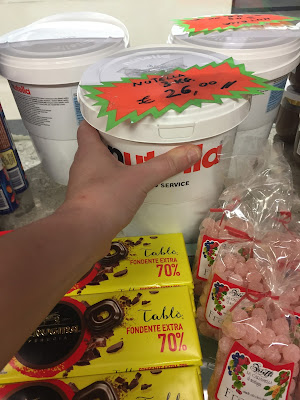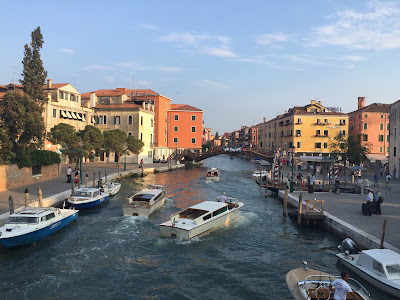Author's note: This piece was supposed to go to a publication that has since folded its travel section. I figured I would post it here since it never ran and it's got some pretty good recommendations. It's the last post I will make about Vienna on this blog (probably).
When it comes to finding places to visit, things to do, and food to eat, you’re spoiled for choice in Vienna. Ranked the #3 city for cost of living in 2017 by Deutsche Bank and always in the top ten for livable cities I general, Vienna has it all—it’s cosmopolitan but not overwhelmingly busy; it’s historic but not stuffy, and it’s got an exceptional public transit system—but the city is also quite walkable. I lived in Vienna as a Fulbright grantee from September 2016 to July 2017, and I got to know the city fairly well during that time. Below, please find my list of top picks for Vienna, including sights, food, shopping, and other leisure activities. It was nearly impossible to choose this few.
When it comes to finding places to visit, things to do, and food to eat, you’re spoiled for choice in Vienna. Ranked the #3 city for cost of living in 2017 by Deutsche Bank and always in the top ten for livable cities I general, Vienna has it all—it’s cosmopolitan but not overwhelmingly busy; it’s historic but not stuffy, and it’s got an exceptional public transit system—but the city is also quite walkable. I lived in Vienna as a Fulbright grantee from September 2016 to July 2017, and I got to know the city fairly well during that time. Below, please find my list of top picks for Vienna, including sights, food, shopping, and other leisure activities. It was nearly impossible to choose this few.
The classic Austrian pub. A favorite of Anthony Bourdain’s, “Wratschko Gastwirtschaft” is the authentic Vienna dining experience, serving a rotating handwritten menu of standard Austrian meals: delicious meatballs, stews, potatoes, chicken. For the less faint of heart, there are plenty of options that had this American gourmand feeling like a picky eater: sweetbreads, lungs, and other organ meats. The decor is simple, all handsome wood-paneling and worn floorboards that make you feel like you’ve found the local spot—the Vienna version of Cheers, if you will.
Neustiftgasse 51, 1070 Wien. Contains both a smoking and non-smoking section. Make reservations. Cash-only. Closed Sundays.
Natsu Sushi
Natsu Sushi is unpretentious, extremely affordable good-quality sushi. Their half-price sushi menu is the way to go, though they offer udon, teriyaki, and other usual Japanese fare at reasonable prices. An order of ten salmon nigiri will run you under six euro (roughly $6.73), and they offer both takeaway and dine-in. As a native of Los Angeles, finding nigiri under a dollar apiece presents a challenge back home, so Natsu is where a good chunk of my disposable income went while I was living here.
Burggasse 71, 1070 Wien; Gumpendorfer Str. 45, 1060 Wien. Non-smoking, no reservations necessary. Accepts cash and debit card.
Treu Bleiben (troy bly-bin)
I didn’t find “Treu Bleiben” until I had already spent months eating my way through Vienna’s cafes and restaurants, but I’m certainly glad I did. Treu Bleiben, which means “stay true” in German, is a normal pub and restaurant during the workweek, but on weekends they serve the best American-style breakfast you’ll find in Vienna. For the culinarily homesick, that means perfectly-done crispy American bacon, eggs, pancakes, oatmeal—everything you’ve been missing amidst all the strudel. It’s located in a very trendy part of town littered with other cafes and plenty of artisanal and vintage shops, so it’s a great way to kick off a Saturday morning of wandering and window-shopping.
Kirchengasse 20, 1070. Cash-only. Smoking.
MAK Design Lab
While Vienna is lousy with world-class museums, the most exciting of them is the Museum für angewandte Kunst (moo-say-um fyur ahn-geh-vahnd-tuh koonst), or the Museum of Applied Arts. Located in a historic building, the MAK truly has something for everyone with even the faintest interest in crafts, with permanent installations of Asian pottery, Baroque furniture, and more. But the MAK’s true treasure is in the basement “MAK Design Lab,” a dynamic space for conceptualizing and analyzing the role of design and craft both in historical and contemporary society. Filled to the brim with avant-garde furnishings, installations, videos, and interactive components, The MAK Design Lab is a model for how museums can truly engage with their audiences across all ages and demographics. In particular, the MAK Design Lab asks the audience not just to consider aesthetics and style but the role of design in today’s consumerist environment—and even asking the rather provocative question if consumption can even make one happy.
Stubenring 5, 1010 Wien. Closed Mondays.
Brotfabrik (broht fah-breek)
Away from the hustle and bustle of the inner districts, the “Brotfabrik” is located in the more laid-back tenth district of Vienna. The building itself is a former 120 year-old bread factory that was converted into a “hub” for some of Vienna’s most intriguing contemporary art galleries that cover a variety of media: painting, sculpture, photography, and design. There’s also a restaurant open on weekdays. Make sure you get a spot for the scheduled gallery walks that take place periodically throughout the year!
Absberggasse 27, 1100 Wien. Check gallery sites for opening hours.
MUSA
Pronounced simply Moo-zuh, this totally underrated art space is owned by the city of Vienna, meaning it’s free. Now around ten years old, “MUSA” displays art from the city’s permanent collection, which numbers over 35,000 objects, spotlights contemporary Austrian artist, and offers an art library, where the Viennese can borrow works of art on paper for their own homes at low monthly fees. It’s also located right by Vienna’s city hall, so it’s easily accessible by public transit, and is located in the vicinity of plenty of cafes and pubs. It’s not a tourist attraction on the level of what you might expect in Vienna, so no huge crowds in the galleries.
Felderstraße 6-8, 1010 Wien. Closed Sundays and Mondays.
Kunsthalle Wien (koonst-hahl-luh veen)
The “Kunsthalle Wien” has two locations: one in the centrally-located Karlsplatz, and one in the Museumsquartier, where it rubs shoulders with dozens of other art institutions. The Karlsplatz location is the smaller venue of the two, containing a ritzy restaurant and a glass-walled gallery space, creating the ultimate fishbowl effect, while the Museumsquartier Kunsthalle Wien is where the larger-scale, multi-story blockbuster shows are exhibited.
Museumsplatz 1 1070 Wien; Treitlstraße 2 1040 Vienna. Open Monday-Sunday.
Humana (hoo-mah-nuh)
This unassuming set of thrift shops is the place to get great clothes on the cheap in Vienna and also know that your money is going to a good cause. “Humana” shops are only one part of the organization “Humana People to People, ”which trains teachers, provides jobs in developing countries, fights climate change and disease—basically, trying to save the world. The clothes on sale in the shops are part of Humana’s goal of reducing waste, as the clothes likely would have ended up in landfills—instead they are recycled around the world in Humana shops for great prices.
Multiple locations around the city.
Multiple locations around the city.
Naschmarkt (nosh-markt)
The “Naschmarkt” is the place to go if you love the rush and crowds of marketplaces—you’ll find produce, coffee, tea, and all manner of food and drink, with proprietors exhorting you to take a sample. On Saturdays, though, the real shopping fun happens: the Naschmarkt hosts a huge flea market with stalls selling pretty much every kind of good you can think of, from vintage jewelry to VCRs to records to historical memorabilia.
Wienzeile, 1060 Wien. Closed Sundays.
Danube River
What could be more quintessentially Austrian than taking a springtime stroll along the beautiful blue Danube river? Well, perhaps it’s not more quintessentially Austrian, but relaxing on the banks on a picnic blanket with a good book is definitely a great activity when the weather gets better. Alternately, if you’re a biker, the city’s extensive bike paths are also present here, and if you’re into flora, there are lovely small gardens scattered along the bike and walking paths. Where the river in my native Los Angeles is more an idea than an actual flowing body of water, the Danube is clean enough to swim in, and you’ll never see trash floating on by, even in the parts that are in more populated areas of the city.


































































